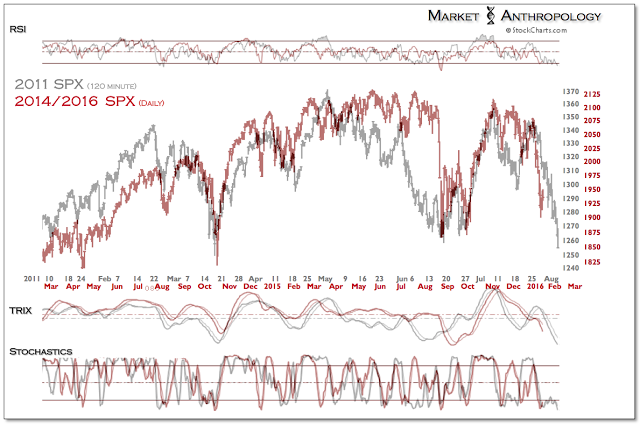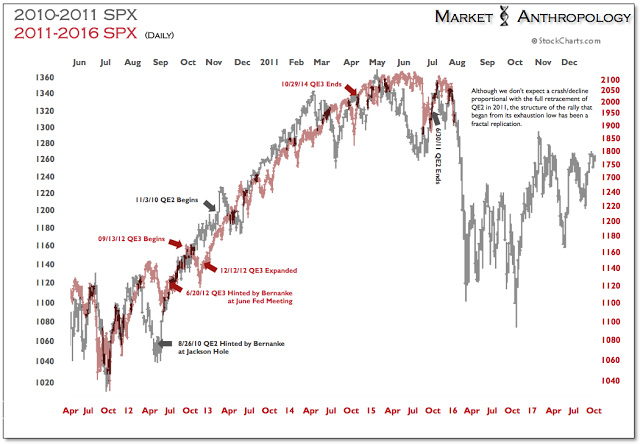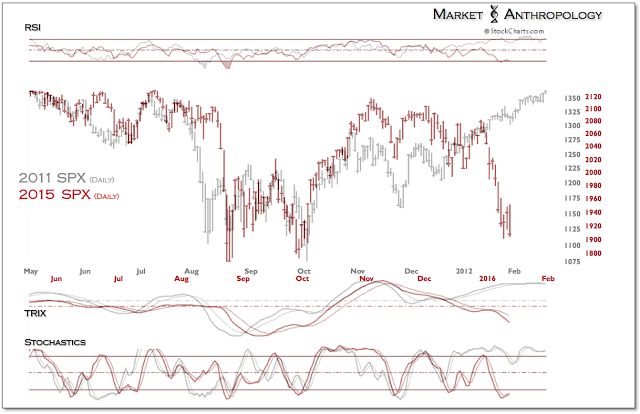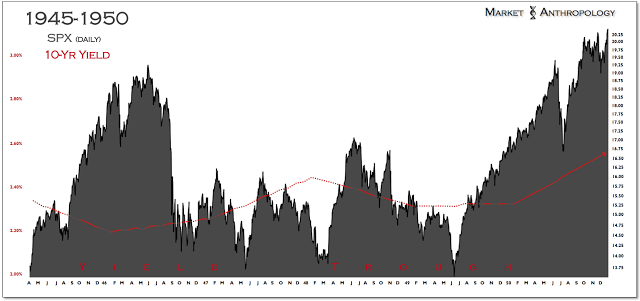Despite last week's historic travails, there has been no rest for the weary - as equity markets remain volatile and under pressure through most of this weeks early sessions. Finding a late day bid deep around 1900 on the S&P 500 Monday, the index quickly recovered 20 points and closed just over flat. Working off Monday's pattern, the bulls quickly spilled early gains on Tuesday, before recovering sharply in a late day push. Wednesday, the S&P 500 followed this weeks intraday pattern and is revisited the lows from Monday.
Although traders may take some solace over the recent stick-save reversals, it pays to mention that the index is flirting with a major support zone just below, established in the fall of 2014 when the Fed terminated its active QE3 program at the end of October. Since then, the index has traded between modest gains and loses, with a cycle high put in last May.
Moreover, the index is now trading close to where major long-term support comes in around 1810 on the SPX. From our perspective, if the SPX breaks below its intermediate support zone around 1860, we suspect that longer-term support will be broken at the Meridian just a few percent away.
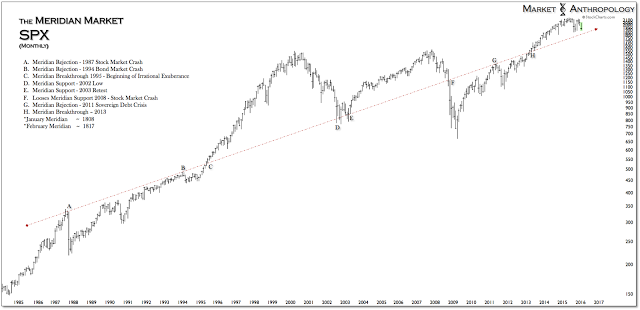
Our general outlook towards US equities has been that a cyclical top was in play and have viewed the 1946 cycle as the closest market parallel. This view was based primarily on our reads of:
- The long-term yield cycle and equity market valuations (i.e. CAPE ceiling from 07' cycle) that are greatly derivative from their bearing within the cycle; and
- The monetary policy backdrop that echoes the long normalization phase in the late 1940's from the extraordinary measures taken by the Fed and Treasury to support the markets after the Great Depression and through World War II.
For equity market investors today, the major takeaways from this period are two-fold:
- Equities that had been buttressed and supported by extraordinary measures had diverged from the underlying economy. The recession in 1945 was one of the only periods in history where the stock market overlooked economic conditions, gaining more than 20 percent even through the downturn. It was only after these measures ended in 1946 that valuations "normalized" with the economy and policy.
- Although the initial correction was swift and significant (~26 percent), the economy did not fall into participants greatest fear of another depression, but muddled through and was range-bound over the next three years (Figure 10) as the economy traversed the yield trough to its next major growth cycle.
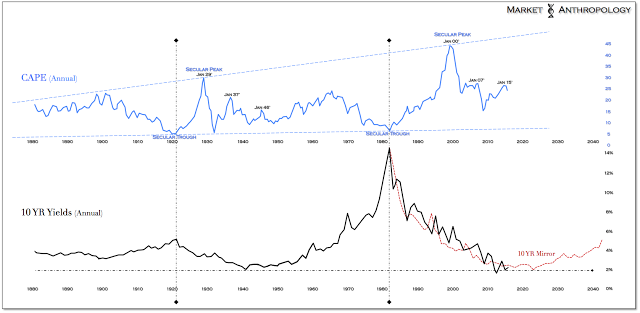
Overall, while the current cycle has its own inherent variables and unique catalysts, we continue to find merit with the big picture congruences with the 1940s. This implies that valuations in equities should modulate lower as policy further normalizes from the crisis stance it held over the past seven years and yields work their way across the shallow trough of the transitional divide.
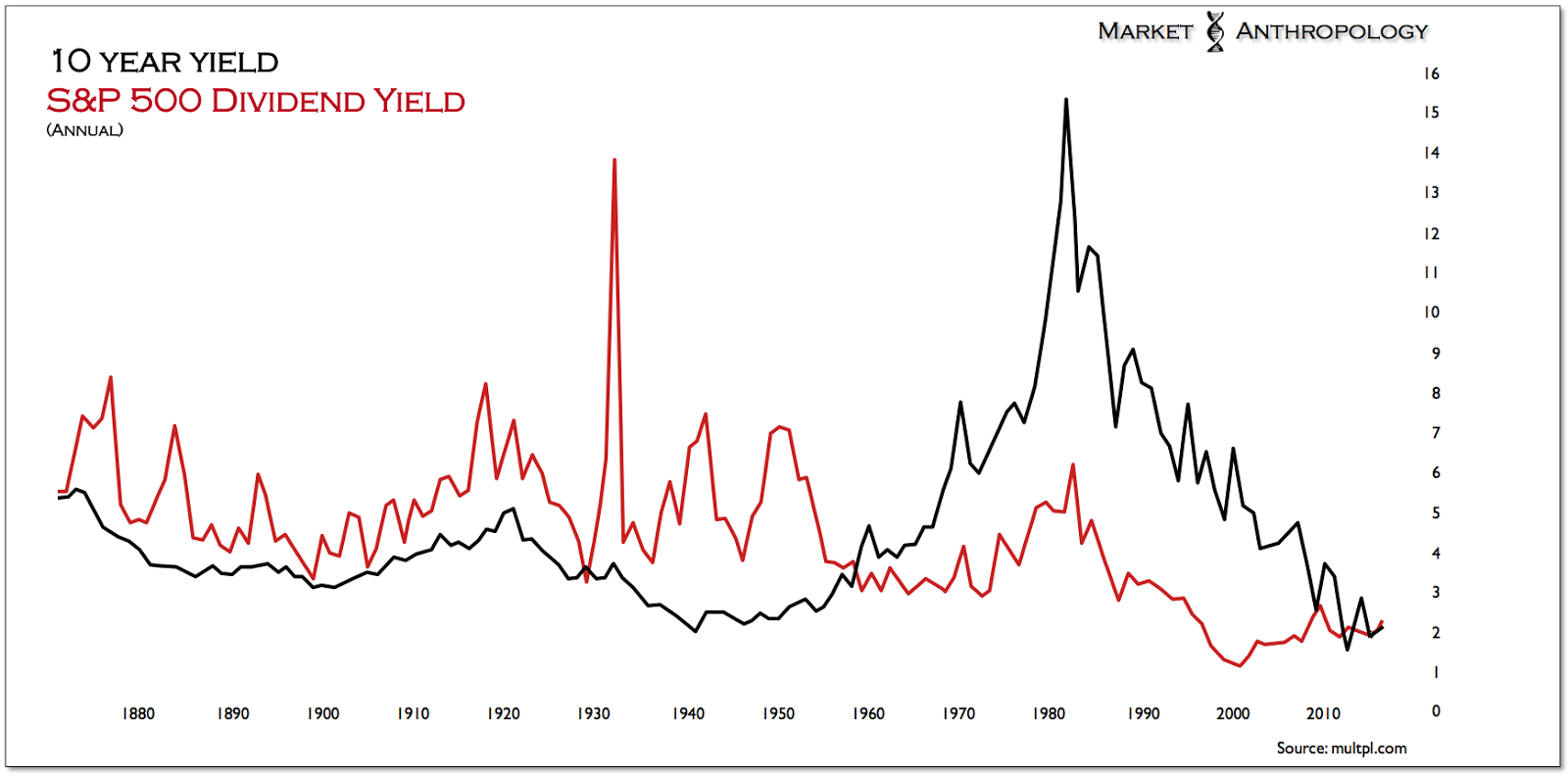
Although we expect a modest rebound in long-term yields as the Fed moves further away from ZIRP, a secular move higher as last seen in 1950 is still likely years away. As such, we suspect that the sea change in yields we noted last year between the U.S. 10-Year and S&P 500 will continue to diverge as equities cyclically turn down and yields flag through the trough.
Technically, there are two broad-brush outcomes for US equities over the next year; We guesstimated subset probabilities for each.
- Bullish scenario A (30 percent probability) - The S&P 500 finds long term support at the Meridian and trades higher in a 20 percent range up to ~2200.
- Bullish scenario B, (10 percent probability) - The S&P 500 finds long term support at the Meridian and trades higher in a continuation of a secular bull market.
- Bearish scenario A, (55 percent probability) - Intermediate-term support fails for the SPX ~ 1860, causing equities to swiftly break through the Meridian and into the air pocket between the previous cycle high (10/07). A target of ~1576 would be a roughly 26 percent decline from the cycle high last May to the previous cycle high in October 2007. This is also within 1 percent of the 38.2% retracement level of the entire bull market rally that began in March 2009.
- Bearish scenario B, (5 percent probability) - Intermediate-term support fails for the SPX ~ 1860, causing equities to break through the Meridian and begin a third major bear market (~50% decline) since 2000.
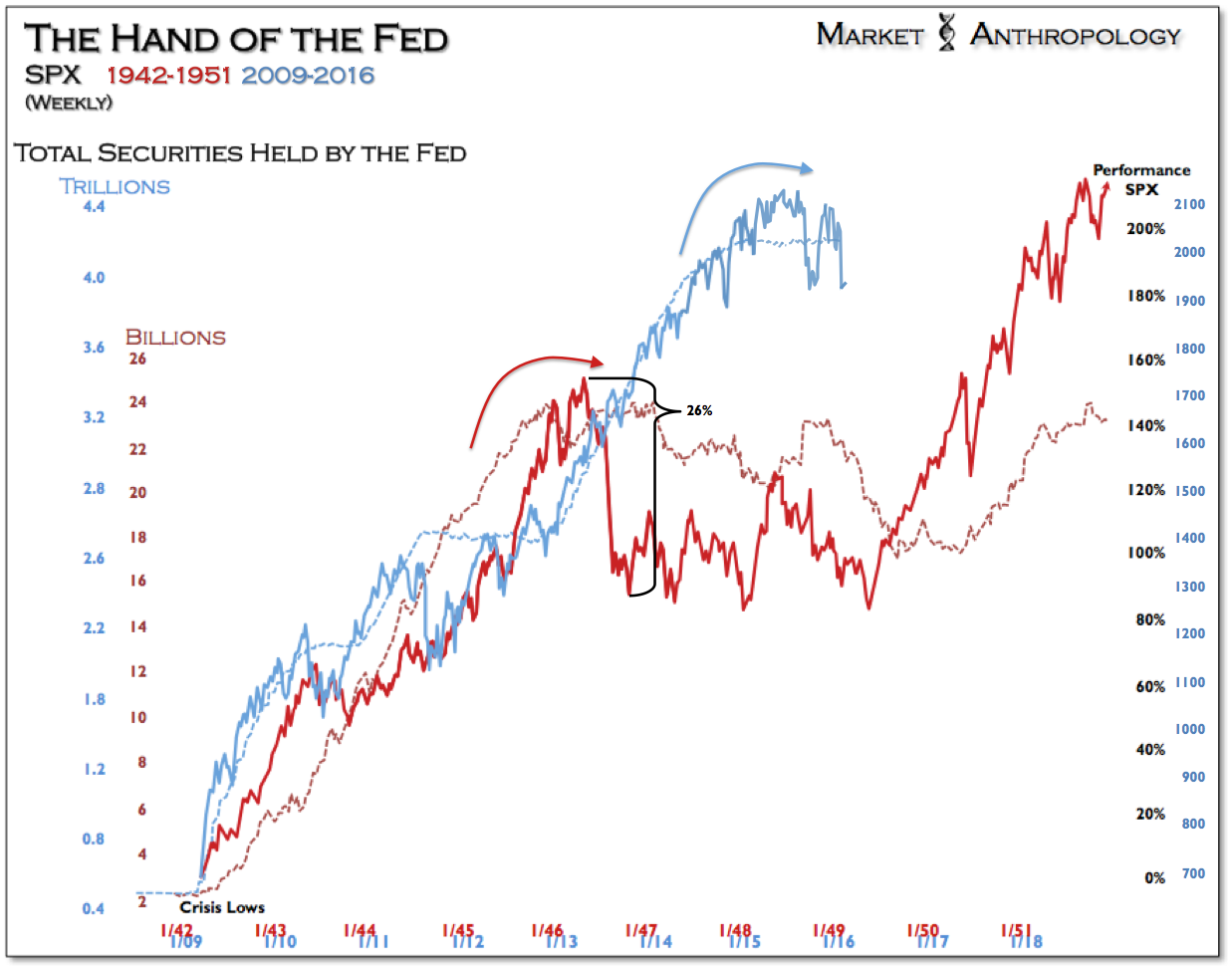
As much as the 1929 and 1937 market declines scare up the most headlines, from a historical perspective, the less severe bearish scenario A would correspond with the cyclical downturn that began in 1946. And while the Fed's extended duration of QE this time around pushed valuations up to the ceiling of the previous cycle (07' CAPE - Figure 2), the three peaks of that period (1929, 1937 and 1946) have mimicked how the current pattern in CAPE has unfurled - and naturally the disposition of yields within the long-term cycle.
Getting back to current market conditions, the SPX is within a few percent of intermediate-term support, extended from the closing exhaustion low in October 2014. This level was also tested during the initial market decline last summer. Although we had used the 2011 low and retracement rally as a prospective guide in December, the recent leg down has broken that pattern (Figure 9). That said, when you view the broader structure over the past two years, it is also a fractal replication of the 2011 market top, which coincided with the end of QE2. The current market, which followed a much longer QE program and a much larger equity rally, has all of the same structural components of the 2011 top (Figure 5), just extended along a much longer timeframe.
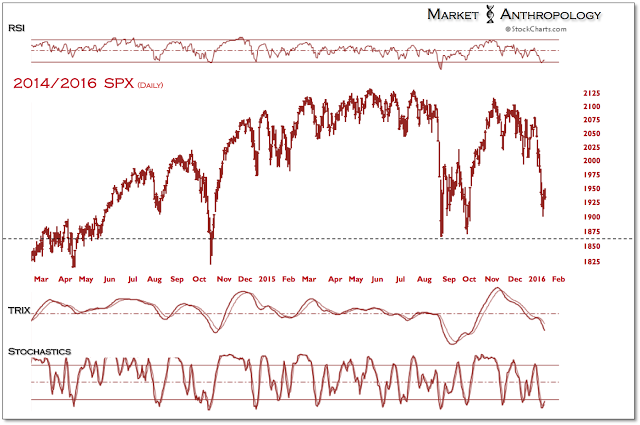
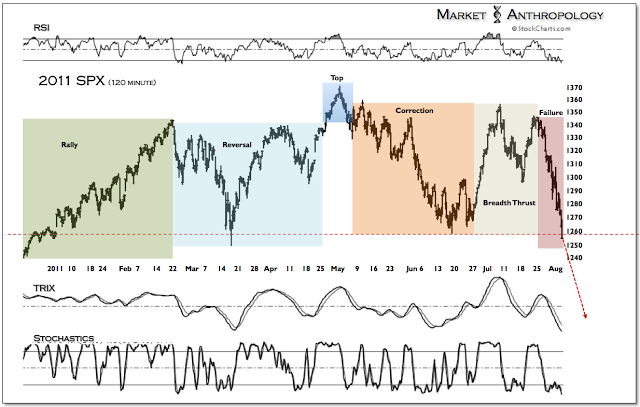
These examples, both the 2011 low and retracement rally - as well as the broader structure of both QE programs, are representations of a market's scale invariance. We incorporate fractal and analog studies within our work not as an act of clairvoyance, but to gain greater perspective. This extends primarily from a belief that market behavior - especially at volatile transitions - reflects persistent patterns, that can provide participants an enhanced outlook. This methodology is based on the notion that participants behavior throughout market history has remained constant and depicted along an emotional continuum that encompasses both rational (i.e. linear) and irrational (i.e. nonlinear) market psychology. It is the self-similarity in price structure that reflects the inherent emotionalities or DNA that can replicate at many different scales, as illustrated in the two examples above.
Like most research approaches, fractal analysis is just a framework that ultimately should be incorporated in a more expansive evaluation of market conditions. From our point of view, although we do not expect a market decline proportional to the full retracement of QE2 in 2011, the broader technical structure that remains under pressure - as well as the underlying policy mechanism that helped drive the rally (Figure 3), leaves us with the impression that bearish scenario A is the most probable outcome.

